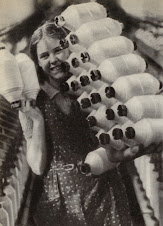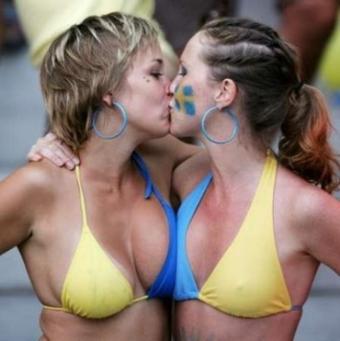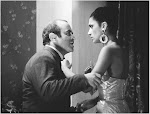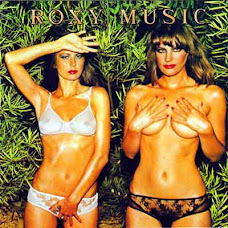A brief history of how it all began
Some may claim it was Ian St. John that founded the port of Liverpool in 1207 but records will tell you it was King John. Whether his second name was Toshack I'm not sure. Basically King John needed another port as well as Chester to send men and supplies over to the recently conquered Ireland. Liverpool was near to Chester and had all the natural resources to dock ships. The origin of the name Liverpool seems clouded (or muddied) if you believe that it was originally called Liuerpul meaning a port of muddy water. Others suggest that it was originally known as Elverpool due to the large number of eels prevelant in the Mersey. Personally I cannot see Scousers dressing as Pearly Kings and Queens, eating jellied eels and saying: "Gawd bless you King John's Mum" but you never know. With so many men and so much trade passing through the area King John set up a weekly market. This can be seen as a precursor to the Dock Road market of today and was probably the beginning of the great trading tradition of the city. Whether snide Lacoste polo shirts were being sold back then, the records don't tell us.
The area soon became a bustling yet small port and as well as a weekly market the king also gave the citizens of Liverpool the right to hold an annual fair for a period of a few days each year. Again this tradition is with us today but is generally known as the Grand National Meeting. How much trading and selling goes on nowadays is debatable but there are few better days out than Ladies Day. A day bartering over a turnips and trading horses or a day in the company of glorious women and backing horses I know where I'd sooner be. As Kings and Queens came and went Liverpool pretty much remained the same for many years. It remained a small town and by the 14th century it's population numbered no more than a thousand. And then nothing really happened. There was a spat in the English Civil War in 1644 when Prince Rupert led a royalist army into the town to try and recapture it back from parliamentarian hands. The townspeople resisted but many were killed and the town was back in royalist hands. Not for long however as they lost the battle of Marston Moor a few weeks later and then the whole of the North of England fell to the parliamentarians. It could be argued that royalty has not been welcome in the area since. But then again parliamentarians have been given an even rougher ride.
By the late 17th and early 18th century Liverpool found itself literally pointing the right way as trade with the English colonies in America and the West Indies flourished. The deepwater port in the Mersey basin was ideal for the ships that crossed the oceans. The first dock in Liverpool was built in 1715. Another four more docks were built in the 18th century as Liverpool grew to be the third largest port in the country behind London and Bristol. The growth was due completely to the Slave Trade and the merchants of Liverpool made huge profits from this slave trade triangle. Liverpool's own triangle involved goods from the area and Manchester in particular being exchanged for slaves in Africa with the slaves ferried across the Atlantic to the West Indies with sugar then being brought back from there to Liverpool. The merchants built ostentatious houses and sugar refining, rope making and shipbuilding flourished. By 1801 the town's population was 77,000, many were immigrants from Wales and Ireland and almost all were poor. It was the early defining days of what was to become the city of Liverpool. A flurry of immigrants, a mix of extremes both socially and religiously made for a heady flammable mix. By the 1840s the Irish Potato famine saw even more Irish immigrants passing through Liverpool. Some sailed forth to America and stayed, others were sent back and remained in Liverpool.
By 1882 Liverpool had by now been granted city status and the population had reached 611,000. At the grass roots of this community the working man was beginning to find they had a little leisure time and a bit of money to spend at the end of the working week. By now a number of local football clubs had appeared and the Liverpool and District Football Association was founded and the working man gravitated to the sport; as players and spectators. The early clubs were church organisations such as the teams from St Benedict's, St Peter's, St Mary's and the St Domingo's Methodist Church team that was created in 1878. By 1886 the popularity of football had increased so much that the number of clubs was now 151. The leading clubs were Bootle, Liverpool Caledonians and the St Domingo club that was now known as Everton who became a founding member of the Football League in 1886. Their first home match saw them beat Accrington Stanley, a team that would become synonymous with Liverpudlians and milk almost 100 years later, by two goals to one in front of a crowd of nine thousand. The Everton club attracted many professional players and in the third season of league football won the championship.
Earlier at the beginning of the 1882-3 season another "King John" had an impact on Liverpool's history. Given that moniker by the local press John Houlding became president of Everton Football Club. He was a self-made man who began his employment as an errand boy at Customs House before making his way up the owner of his own brewery called 'Houlding's Sparkling Ales'. In 1884 he moved the Everton club to land owned by another brewery in Anfield Road. He argued with other members of the board over the purchase of adjoining land. These other members steadfastly refused to support Houlding and purchased their own land on the north side of Stanley Park for the sum of £8,090 and Goodison park was ready for the 1892-93 season.
John Houlding initially refused to budge but eventually gave notice to leave the Everton club and soon set up a new professional club. Aided by John McKenna he attempted to register the new club as 'Everton Football Club and Athletic Grounds Company Limited'. The Football League refused to allow another club with the name Everton leading to "King John" registering the club in the name of Liverpool. For the remaining years of his life Houlding ran the club superbly well and it soon became a respected rival to the club on the other side of Stanley Park. The rivalry had begun and some would say that a hundred years later the initial argument has still not been resolved.
The first game between Everton and Liverpool was a Liverpool cup fixture that Liverpool won 1-0. The first league meeting took place in 1894 with Everton winning 2-0 in front of 44,000 fans with gate receipts over a thousand pounds; a significant amount for the times. In fact, crowds were generally high for all games and both clubs became wealthy from the high gate revenue. This wealth made both clubs major players in the transfer market, a factor that led to both clubs doing consistently well. In 1906 Liverpool won the league championship whilst Everton won the FA cup. Further championships 'came' to both clubs in the twenties and thirties. By now heroes began to appear in Dixie Dean and Tommy Lawton at Everton and Elisha Scott at Liverpool and the support became far more partisan with a real rivalry building up in the city. The Archibald Leitch-designed Goodison Park stands would be packed to the rafters and in 1928 a roof was built on the Spion Kop at Anfield giving protection to 37,000 fans and improving the acoustics for the shouting, singing mass of fans that populated that end of the ground.
Subscribe to:
Post Comments (Atom)
































































1 comment:
To be continued
Post a Comment